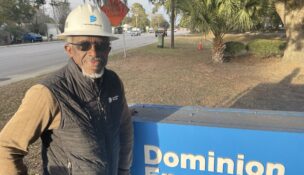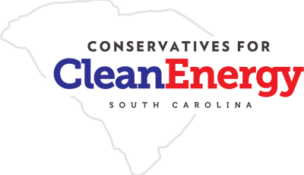Researchers in North Charleston receive $1.24M for wind turbine project
Staff Report //December 2, 2019//
Researchers in North Charleston receive $1.24M for wind turbine project
Staff Report //December 2, 2019//
Clemson University researchers in North Charleston have received $1.24 million from the Department of Energy to develop a new way to test equipment on offshore wind turbines. The goal is to enhance the wind turbines’ reliability, making them more cost-effective and attractive to build.
More wind power would make the world less reliant on fossil fuels, which have been linked to climate change and sea-level rise. The rising water has contributed to more frequent flooding during high tide in Charleston and other coastal cities.
 A team of researchers is working at the Dominion Energy Innovation Center in North Charleston to temper the effects of climate change. J. Curtiss Fox, the director of research facilities at the center, said in a Clemson news release that it is crucial to make offshore wind turbines as reliable as possible.
A team of researchers is working at the Dominion Energy Innovation Center in North Charleston to temper the effects of climate change. J. Curtiss Fox, the director of research facilities at the center, said in a Clemson news release that it is crucial to make offshore wind turbines as reliable as possible.
The offshore turbines are in windy, blustery environments that are often far from land and difficult enough to reach that many come equipped with helicopter landing pads, the release said.
“To go out there and change a $5 part becomes a very expensive endeavor,” Fox said. “There’s very little margin for error, or your operating costs go up dramatically.”
About 150 new offshore wind projects are scheduled to be completed around the world over the next five years, the release said.
According to Fox, Clemson’s new research is aimed at ensuring reliability, even as wind turbines grow larger. Over the next two years, researchers will sharpen their focus on the nacelle, a box atop the wind turbine where the energy from blade rotation is converted into electricity.
Nacelles will be connected to lab equipment that will simulate real-world conditions such as strong ocean waves and gusty winds, and the simulations will be used to adjust the turbines to improve reliability. The nacelles will generate electricity and send it into the Duke Energy eGrid, a grid emulator located at the North Charleston facility.
This project is expected to, for the first time, simultaneously test all three pillars of a wind turbine — the electrical generator, the mechanical wind capturing system and the software that connects them, the release said.
Randy Collins, Clemson’s associate vice president and director of the research for the energy center, said the research could open new doors for wind energy around the world.
“The new testing method we are developing will help design and build the next generation of offshore turbines,” Collins said. “The theoretical, practical and industrial aspects are all coming together in this research. It’s a great opportunity to drive forward in testing capabilities and validate computer simulation models and controls with real-world environments.”
Daniel Noneaker, chair of Clemson’s Holcombe Department of Electrical and Computer Engineering, said the project adds to a portfolio of research that is accelerating the development and deployment of wind technology.
i













